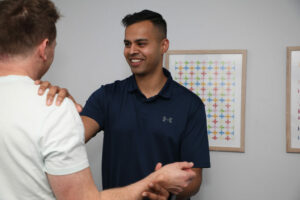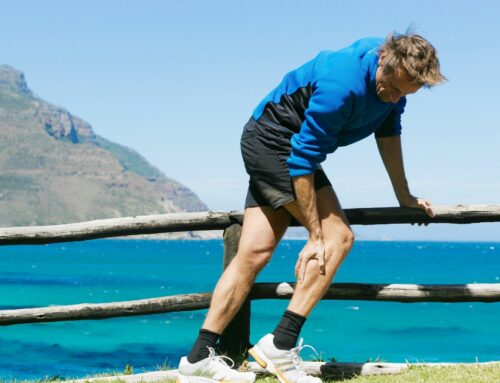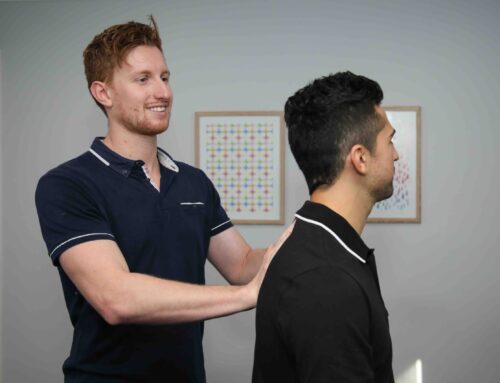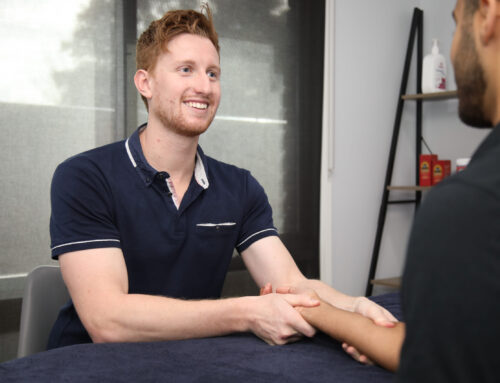Shoulder injuries are really common mainly because the joint is not attached together that well – there is only the size of a 50 cent piece of bone connecting the arm on to the shoulder girdle. So it needs a lot of ligament and muscle support, such as the rotator cuff muscles, to hold it in place, and it’s these structures that can break down with injury. Here’s some more information about the anatomy of the shoulder, what can go wrong, and how to seek help if you do suffer a shoulder injury.
What actually is the Rotator Cuff?
The rotator cuff is the name given to a group of 4 muscles in the shoulder. The roll of these four muscles is to stabilize the glenohumeral joint as well as assist moving the arm in a number of directions.
The name of these four muscles are:
- Supraspinatus
- Infraspinatus
- Subscapularis
- Teres Minor
Whether you’re a tradie, a stay at home Mum or sportsperson, these muscles are vital. We use them every day at work or home when we move our arm or shoulder.

Rotator Cuff complex is made up of 4 muscles
So how do I look after my cuff?
There’s a number of things we can do to maintain the health of our rotator cuff. Participating in resistance training activities is optimal as our tendons in our shoulder love to be loaded to increase their strength. Maintaining healthy postures and correct lifting techniques help ensure we’re using these muscles safely without exposing them to excessive stress.
We can also participate in hanging, the activity of suspending our body weight by holding onto a bar overhead. This leads to a nice stretch to the shoulder joint, as well as surrounding musculature and joints. There’s current research that suggests it also assists in maintaining our subacromial space (an area in our shoulder containing the supraspinatus tendon), decreasing our likelihood of experiencing a condition called subacromial impingement.
What is subacromial Impingement (SAI)?
SAI is when the supraspinatus tendon becomes impinged or squished in the subacromial space. This generally occurs when the subacromial space becomes smaller. This can occur from inflammation of the supraspinatus tendon, or enlargement of the subacromial bursa which is a fluid filled sac with a purpose of reducing the friction the supraspinatus experiences. Another cause is changes to the shape of the acromion, which can begin to hook and/or grow into the subacromial space.
The most common symptoms are:
- Pain over the shoulder area
- Discomfort laying on shoulder
- Pain during lifting arm, particularly above head
- Weakness or decrease in lifting strength
How can an Osteopath help?
 An Osteopath is qualified to assess the shoulder and rotator cuff to examine for any weakness, muscle imbalance or injury. From here they may provide some manual therapy to increase shoulder joint range, relax tight muscles and help increase joint stability. They may also treat surrounding areas including the neck or back in case of any compensations occurring. Some management advice may be discussed which can include activity modification, general health advice, as well as exercises to increase the strength and stability of the rotator cuff muscles, and other areas of the body in need of improvement.
An Osteopath is qualified to assess the shoulder and rotator cuff to examine for any weakness, muscle imbalance or injury. From here they may provide some manual therapy to increase shoulder joint range, relax tight muscles and help increase joint stability. They may also treat surrounding areas including the neck or back in case of any compensations occurring. Some management advice may be discussed which can include activity modification, general health advice, as well as exercises to increase the strength and stability of the rotator cuff muscles, and other areas of the body in need of improvement.




